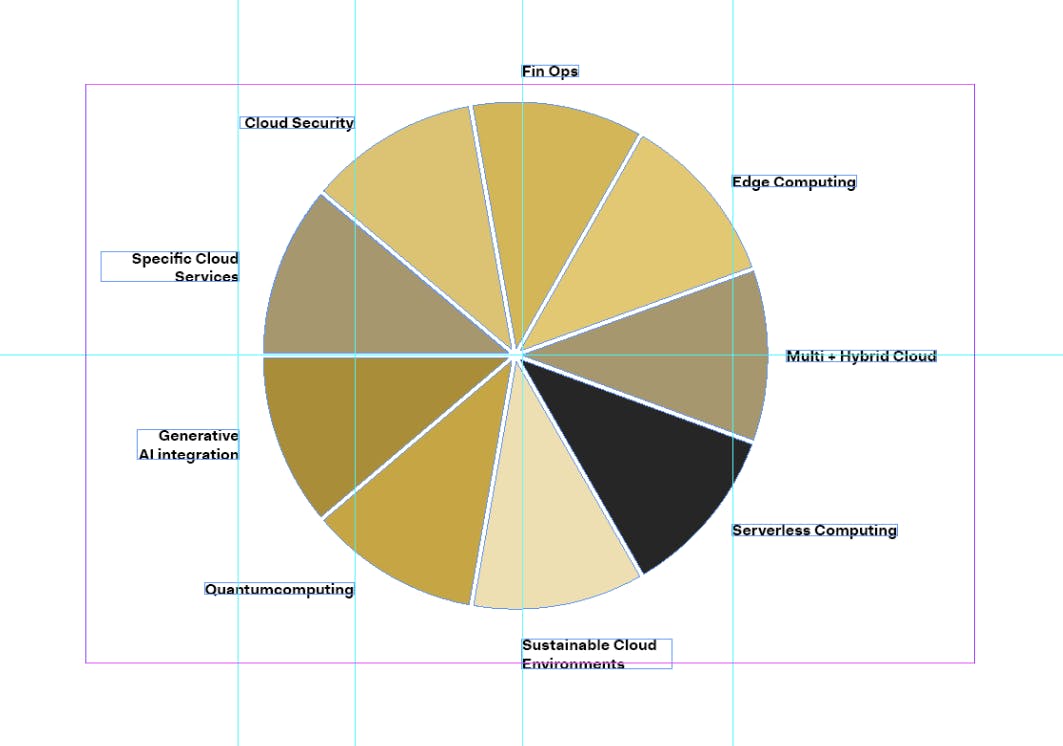Date:
15 Apr 2024
Author:
PREO AG
On-Premise vs. Cloud
Cloud solutions are becoming increasingly diverse, integrative and complex
The momentum in cloud computing continues unabated. Hardly any successful company can do without a cloud strategy. And the options for different cloud solutions are becoming increasingly diverse and complex. Whether public cloud, private cloud, multi-cloud or hybrid cloud - even experienced IT managers do not always find it easy to develop and implement a suitable strategy for their company. What is particularly challenging is that the dynamic nature of technological development not only requires knowledge of the current possibilities, but also of the trends and future scenarios in cloud computing that are already emerging today, so that these can be taken into account at an early stage in the further development of the company's cloud strategy.
In this blog post, we therefore summarise current cloud trends and show why hybrid cloud solutions are currently favoured in many companies and how new financial leeway can be created within such an IT architecture through the integration of used software.
9 trends that are already emerging today in the future of the cloud
1. Industry-specific cloud services and platforms
Large cloud providers, such as Google, Amazon and Microsoft, are increasingly focussing on offering customised cloud services for specific industries. This includes cloud solutions and platforms that are tailored to the specific needs and requirements of financial service providers, healthcare providers, logistics companies or industrial production operations, for example.
2. Integration of generative AI
The integration of generative AI into cloud platforms, acting as a middleware layer, will simplify and optimise the development and deployment of AI-based applications. This technology will enable organisations to deploy large language models and other AI tools in a more efficient and targeted way, leading to smarter and more adaptable cloud environments.
3 Sustainability and efficiency
Certainly one of the megatrends in cloud computing. AI applications, quantum or edge computing are causing cloud infrastructures to grow into ever new dimensions, which inevitably also applies to their energy requirements. At the same time, Europe has set itself the goal of becoming climate-neutral by 2055 at the latest. The associated requirements under the EU-wide CSR Reporting Directive are gradually affecting more and more companies. As a result, sustainable and energy-efficient IT and therefore cloud solutions will continue to increase. These include the increased use of renewable energies and efficiency improvements through the use of waste heat in cloud data centres as well as AI-supported and automated resource management.
4 Quantum computing in the cloud
The integration of specialised quantum chips into cloud platforms is expected to significantly increase the possibilities for complex simulations and problem solving in various industries. As a result, this will significantly push the boundaries of computing capacity and provide innovative solutions to challenging problems.
5 Serverless computing
Serverless computing is gaining popularity as companies only pay for the actual storage space or CPU time they use instead of renting a specific number of servers. This flexibility makes it possible to implement new applications without having to worry about the management and configuration of the underlying infrastructure.
6. Multi-cloud and hybrid cloud strategies
The use of multi-cloud and hybrid cloud environments, in which public and private clouds and on-premise solutions are combined as required, is becoming increasingly important. These approaches offer companies flexibility, scalability and the opportunity to simultaneously utilise the strengths of various cloud providers and the advantages of on-prem operation within an IT landscape.
Another factor in favour of multi-clouds or hybrid clouds is the avoidance of a vendor lock-in and thus excessive dependence on a single cloud provider. In Europe, for example, Microsoft has been trying for some time to bind customers to its cloud products in the long term through its licensing conditions in combination with attractive price advantages, thereby influencing the competition in its favour, as the results of a new study* commissioned by the Computer & Communications Industry Association (CCIA) confirm.
7 Edge computing
The combination of edge computing with generative AI will lead to continuous improvement in real-time data processing and AI-driven decision making. By bringing generative AI capabilities closer to the data sources, edge computing enables faster and more efficient processing.
8 FinOps integration
Especially during the pandemic years, many companies began to engage with and integrate cloud solutions in a short period of time. However, with the multitude of offers and options, the costs usually rose disproportionately and caused IT budgets to skyrocket. Average Europe-wide price increases for Microsoft cloud products of 11 per cent in 2023 are another significant cost driver. Added to this are phenomena that are typical for large companies and are barely visible, such as shadow clouds or cloud sprawl, which pose compliance and security risks in addition to the financial risk. With the FinOps method and suitable tools, companies can identify their cloud resources, optimise their use, increase efficiency potential and reduce costs and security risks.
9 Cloud security is becoming a key challenge
Another megatrend: with increasing investment in cloud infrastructures, cyber security budgets will also increase. This is because cloud security risks are increasingly becoming corporate risks. For example, the PwC 2024 Global Digital Trust Insights shows that the proportion of companies that have experienced cloud attacks, such as ransomware, malware or DoS attacks, has risen from 27 to 36 per cent year-on-year. Complex cloud structures require new approaches to data and infrastructure security, where observability and early detection of potential threats are crucial aspects.
*see. https://cispe.cloud/yet-more-evidence-of-microsofts-discriminatory-prices-in-europe/
Current cloud trends at a glance

Cloud cost management and cloud security as key challenges
The cloud trends described offer most companies today and in the future numerous collaborative, cross-location benefits as well as practical and productivity-enhancing solutions for a future-orientated IT landscape. At the same time, however, they also harbour corresponding financial, security and compliance risks due to their increasing complexity. Meeting these challenges already requires companies to have a customised and flexible strategy, comprehensive knowledge and effective concepts for active risk minimisation. Our experience shows that many IT managers are still reluctant to move completely to the cloud for both financial and security reasons and continue to rely on proven and efficient on-prem solutions as part of their IT asset management, at least in some areas.
Despite cloud trends: hybrid cloud solutions and on-prem remain popular
In Cisco's Global Hybrid Cloud Trends Report from 2022, 82 percent of IT managers stated that they had established a hybrid cloud structure. In addition, 47 per cent of companies use two to three public IaaS clouds (Infrastructure as a Service) and only 8 per cent use a single public IaaS cloud provider. Security was cited by 37 per cent of respondents as one of the biggest challenges when providing multiple cloud services.
Especially in industries with high standards in the area of compliance and data protection, such as energy, healthcare, transport and logistics or waste disposal, but also in the area of public administration, the risks of total cloud solutions are still too high for many IT managers. Instead, hybrid cloud architectures or even complete on-premise solutions are being used, in which cloud-specific security risks can be ruled out, at least for some areas. In addition, these scenarios open up the possibility of sustainably reducing ongoing licence costs through the needs-based integration of used software, as the following example from the LMT Group shows:
The company from the special machine construction sector with 2,200 seats wanted to procure the required licences as needed. This involved 10 IT locations worldwide. Among other things, the solution combined an Office 365 E1 plan with used licences from PREO for Office 2016 and Windows 2016 Server CAL. The result was the functionality of an E3 plan, but without Office ProPlus.
Result: The company achieved savings in the upper six-figure range without any loss of productivity. The investment was amortised in the second year. Does that sound interesting? You can find the entire customer case here.
Convincing advantages - used software from PREO for on-prem operation
We are one of the pioneers in the European trade in used software licences. We offer companies, organisations and public administrations a large selection of used volume licences for servers, operating systems or application software, especially from Microsoft, with which they can sustainably optimise their licence costs and benefit in several ways:
- High savings on ongoing licence costs of up to 70 percent compared to the respective new version.
- Greater sustainability in the IT sector by promoting an active circular economy and reducing the company's CO2 footprint.
- 100 percent legally compliant and audit-proof licence acquisition with maximum transparency in all processing steps, including complete documentation in the PREO licence portal "Easy Compliance".
- Many years of expertise in the integration of used software licences into classic network structures or hybrid licence models.
- Detailed market knowledge and extensive experience through the audit-proof transfer of over one million used software licences.
- Existing software licence management capacities for large IT infrastructure projects with thousands of workstations and cross-border locations.
- Convincing reference projects for numerous medium-sized and large companies from a wide range of industries.









